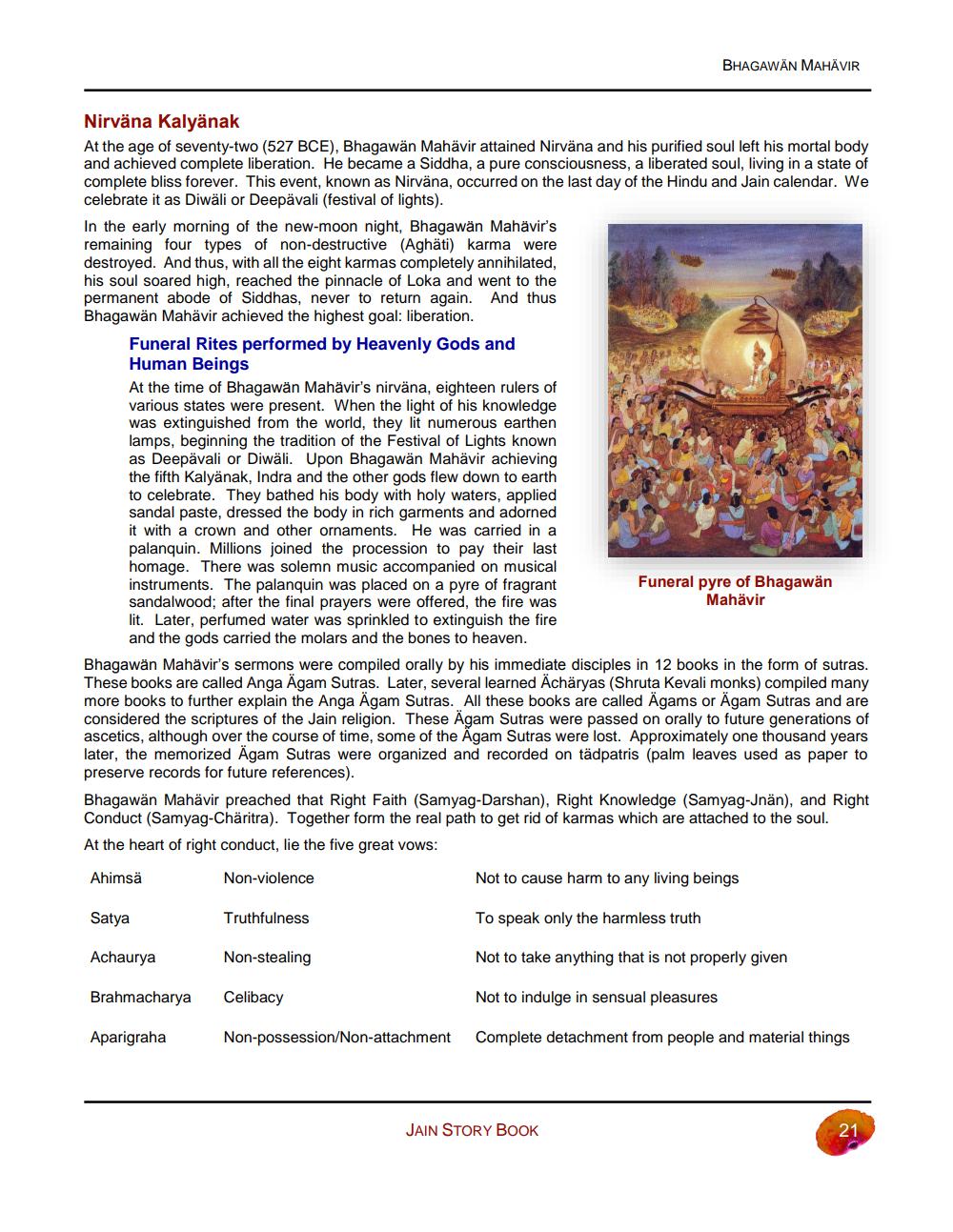________________
Nirvana Kalyanak
At the age of seventy-two (527 BCE), Bhagawän Mahävir attained Nirväna and his purified soul left his mortal body and achieved complete liberation. He became a Siddha, a pure consciousness, a liberated soul, living in a state of complete bliss forever. This event, known as Nirvana, occurred on the last day of the Hindu and Jain calendar. We celebrate it as Diwäli or Deepävali (festival of lights).
In the early morning of the new-moon night, Bhagawan Mahavir's remaining four types of non-destructive (Aghäti) karma were destroyed. And thus, with all the eight karmas completely annihilated, his soul soared high, reached the pinnacle of Loka and went to the permanent abode of Siddhas, never to return again. And thus Bhagawan Mahavir achieved the highest goal: liberation.
Funeral Rites performed by Heavenly Gods and Human Beings
At the time of Bhagawan Mahavir's nirväna, eighteen rulers of various states were present. When the light of his knowledge was extinguished from the world, they lit numerous earthen lamps, beginning the tradition of the Festival of Lights known as Deepavali or Diwali. Upon Bhagawän Mahävir achieving the fifth Kalyänak, Indra and the other gods flew down to earth to celebrate. They bathed his body with holy waters, applied sandal paste, dressed the body in rich garments and adorned it with a crown and other ornaments. He was carried in a palanquin. Millions joined the procession to pay their last homage. There was solemn music accompanied on musical instruments. The palanquin was placed on a pyre of fragrant sandalwood; after the final prayers were offered, the fire was lit. Later, perfumed water was sprinkled to extinguish the fire and the gods carried the molars and the bones to heaven.
BHAGAWÄN MAHÄVIR
Bhagawan Mahavir's sermons were compiled orally by his immediate disciples in 12 books in the form of sutras. These books are called Anga Ägam Sutras. Later, several learned Ächäryas (Shruta Kevali monks) compiled many more books to further explain the Anga Ägam Sutras. All these books are called Ägams or Ägam Sutras and are considered the scriptures of the Jain religion. These Ägam Sutras were passed on orally to future generations of ascetics, although over the course of time, some of the Agam Sutras were lost. Approximately one thousand years later, the memorized Ägam Sutras were organized and recorded on tädpatris (palm leaves used as paper to preserve records for future references).
Satya
Achaurya
Brahmacharya Celibacy
Aparigraha
Truthfulness
Non-stealing
Bhagawan Mahavir preached that Right Faith (Samyag-Darshan), Right Knowledge (Samyag-Jnän), and Right Conduct (Samyag-Chäritra). Together form the real path to get rid of karmas which are attached to the soul.
At the heart of right conduct, lie the five great vows:
Ahimsä
Non-violence
Funeral pyre of Bhagawän Mahävir
Not to cause harm to any living beings
To speak only the harmless truth
Not to take anything that is not properly given
JAIN STORY BOOK
Not to indulge in sensual pleasures
Non-possession/Non-attachment Complete detachment from people and material things
21




